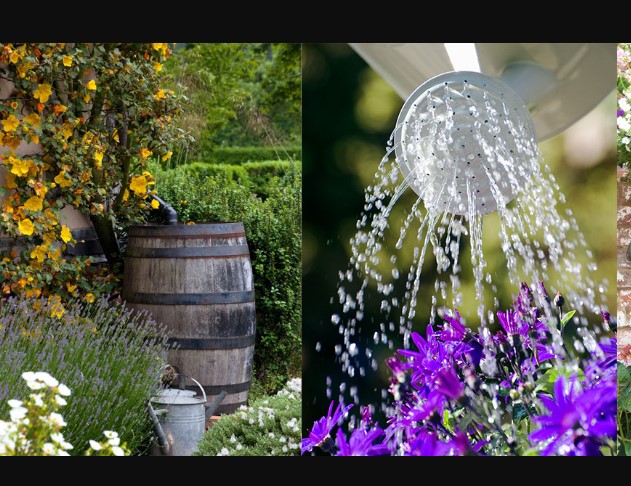In an era of increasing environmental consciousness and a growing commitment to sustainability, rainwater harvesting emerges as a beacon of hope. Particularly in garden maintenance, where water consumption can be substantial, harnessing rainwater presents an invaluable opportunity to reduce reliance on traditional water sources while nurturing lush, vibrant landscapes. However, to fully grasp the potential and intricacies of rainwater harvesting for gardens, it is imperative to delve into its fundamental principles, techniques, benefits, and implementation strategies. In this comprehensive guide, we embark on a journey to explore the multifaceted world of rainwater harvesting, uncovering its profound implications for sustainable gardening practices.
Understanding Rainwater Harvesting: Principles and Techniques
At its core, rainwater harvesting entails collecting and storing rainwater for subsequent use. The process begins with the interception of rainfall, typically facilitated by roofing structures or other impervious surfaces. As rainwater cascades down these surfaces, it is channeled towards collection points, such as gutters and downspouts, where it undergoes filtration and diversion into storage systems. Various techniques exist for harvesting rainwater, each tailored to suit specific contexts and objectives.
One of the most common methods is the utilization of rain barrels or cisterns, which serve as reservoirs for collected rainwater. These containers come in diverse shapes and sizes, ranging from compact barrels suitable for residential gardens to large-scale cisterns capable of accommodating substantial volumes of water. Additionally, innovative systems incorporating underground storage tanks or above-ground ponds offer enhanced storage capacity and aesthetic appeal, seamlessly integrating rainwater harvesting into garden landscapes.
Moreover, the efficiency of rainwater harvesting systems can be augmented by integrating supplementary components, such as first-flush diverters and filtration mechanisms. First-flush diverters prevent the initial flow of rainwater, which may contain debris and contaminants accumulated on roofing surfaces, from entering storage tanks, thus ensuring the purity of stored water. Similarly, filtration devices, such as mesh screens and sediment traps, eliminate impurities and sedimentation, enhancing the quality of harvested rainwater.
Benefits of Rainwater Harvesting for Gardens
Adopting rainwater harvesting holds myriad benefits for gardeners, encompassing environmental, economic, and social dimensions. Among these advantages is the conservation of freshwater resources, as rainwater harvesting alleviates the burden on municipal water supplies and reduces the need for groundwater extraction. By harnessing rainwater, gardeners contribute to preserving natural ecosystems and mitigating water scarcity, fostering resilience in the face of climate change-induced water stress.
Furthermore, rainwater harvesting offers substantial economic savings by diminishing reliance on expensive municipal water utilities and minimizing irrigation costs. In regions prone to drought or water restrictions, sustaining garden vitality without incurring exorbitant water bills becomes increasingly invaluable. Additionally, installing rainwater harvesting systems may qualify for government incentives and rebates, further incentivizing adoption and investment in sustainable water management practices.
From a social perspective, rainwater harvesting promotes community engagement and empowerment, fostering a sense of collective responsibility for environmental stewardship. Community-driven initiatives, such as neighborhood rainwater harvesting projects or educational workshops, facilitate knowledge-sharing and collaboration among residents, catalyzing positive change at the grassroots level. Moreover, the aesthetic enhancement of gardens through the integration of rainwater features fosters a deeper appreciation for the intrinsic beauty of nature, fostering connections between individuals and their environment.
Implementation Strategies: Integrating Rainwater Harvesting into Garden Design
Embarking on a journey towards rainwater self-sufficiency necessitates careful planning and strategic implementation within the garden design framework. To maximize the efficacy of rainwater harvesting systems, gardeners must consider site-specific climatic conditions, topography, soil composition, and plant selection. By aligning rainwater harvesting infrastructure with the unique characteristics of their garden landscape, individuals can optimize water capture and utilization while minimizing environmental impact.
Key considerations in the design phase include selecting suitable collection surfaces, such as rooftops or impermeable pavements, to maximize rainwater interception. Additionally, collection points and storage tanks should be strategically located to facilitate efficient water flow and minimize loss through evaporation or runoff. Integrating existing irrigation systems, including drip irrigation or soaker hoses, enables direct water delivery to plant roots, minimizing wastage and maximizing moisture retention.
Moreover, incorporating green infrastructure elements, such as rain gardens and swales, synergizes with rainwater harvesting efforts to enhance water infiltration and groundwater recharge. These vegetated features beautify the landscape and serve as natural filtration and absorption mechanisms, purifying rainwater and replenishing aquifers. By embracing a holistic approach that integrates rainwater harvesting with ecological design principles, gardeners can create resilient, regenerative landscapes that thrive harmoniously with nature.
Conclusion
Rainwater harvesting emerges as a transformative paradigm in sustainable gardening practices, offering a pathway toward water self-sufficiency, environmental stewardship, and community resilience. By harnessing the power of rainwater, gardeners can unlock a wealth of benefits ranging from water conservation and cost savings to biodiversity enhancement and community empowerment. As we navigate the challenges of a rapidly changing climate and dwindling water resources, embracing innovative solutions like rainwater harvesting becomes ever more pressing. By embracing this ancient practice with modern ingenuity, we pave the way towards a greener, more sustainable future for future generations.

